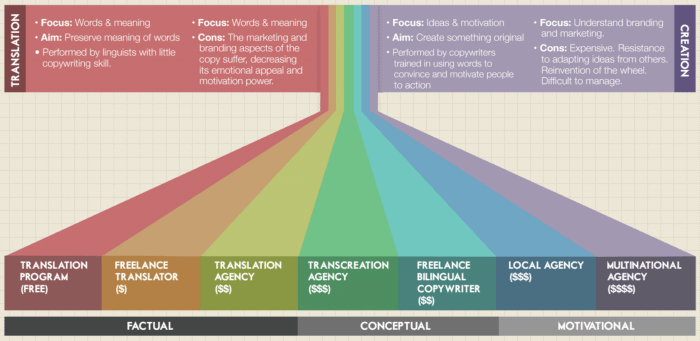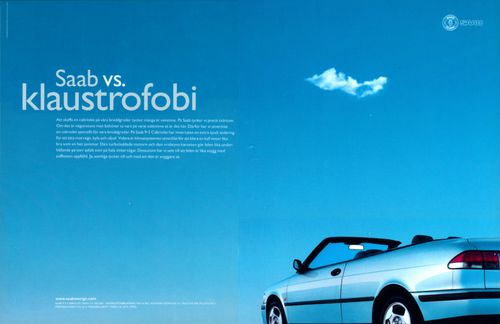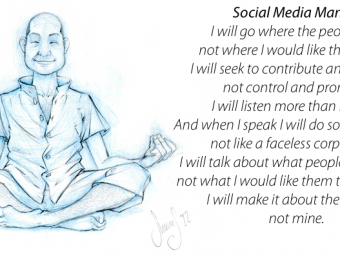Is your brand’s message lost in translation?
When people think about cross-cultural marketing blunders they usually think of the funny translation gaffs. There are dozens of examples. ...
10 Jul 2023 5299 ViewsWhen people think about cross-cultural marketing blunders they usually think of the funny translation gaffes. There are dozens of examples. You’ve probably come across a few of these yourself.
- Clairol introduced the “Mist Stick,” a curling iron, into Germany only to find out that “mist” is slang for manure. Not too many people had use for the “manure stick.”
- Electrolux, the Scandinavian vacuum manufacturer, tried to sell its goods in America with a slogan that was written in Sweden, “Nothing sucks like an Electrolux.”
- Pepsi translated its slogan, “The choice of a new generation” for use in Tiawan. Unfortunately it came out as “Pepsi will bring your ancestors back from the dead.”
- Perdue Chicken’s slogan, “It takes a tough man to make a tender chicken,” got terribly mangled when that campaign was launched in Mexico. A photo of Frank Perdue with one of his birds appeared on billboards with the Spanish caption “It takes a hard man to make a chicken aroused”.
These types of mistakes are easy to spot with a quick back translation or a check with someone from the local market. The silent killer of many cross-cultural campaigns is translation that looks fine in a back translation but to a native sounds lifeless and utterly forgettable. Your brand’s personality expressed through emotion, nuance and colloquialism is often the first thing to be lost in translation.
Fortunately, there is another way to get your message across in other languages. It’s not translation but adaptation.

There are several ways to get your marketing communication from one language to another. You have Google translate, professional translation firms, local ad agencies, freelancers and the exchange student who’s interning in the accounting department (don’t go there). In the middle of this spectrum of possibilities is the professional adaptation agency also called a transcreation agency. Our client, Textappeal is one such firm. We developed this Transcreation Spectrum site for them to help show the full range of possibilities.
On several occasions I have tried to use translation houses for advertising copy but found they were too faithful to the words on the page often at the expense of concept, nuance and personality. On the other hand I have also tried to use bilingual copywriters who were not specialized in adaptation or transcreation. They understood how to use nuance and personality but were often trying to reinvent the creative rather than adapt it. That makes sense, after all they are trained to come up with original ideas not rewrite someone else’s ideas.
What is needed is a little bit of both. Someone like a good translator who is proficient in the source language and a native in the target language. And someone like a good copywriter who understands the use of nuance and emotion to achieve the objectives in the brief. However, they also must be someone who derives their work satisfaction not from creating original concepts but from adapting concepts from one language to another. This is a professional adapter.
Some people call this process adaptation. Others refer to is as transcreation. I’m partial to the word adaptation but transcreation is as apt a moniker and perhaps more descriptive of the process.
Adaptation is more expensive than translation but in the long run is worth the investment. SAAB once commissioned my team at Lowe to do a study comparing the cost effectiveness of translating vs adapting vs using local bilingual copywriters for their global campaign. We sent several ads through the three channels and tracked quality, cost and time. Although the cost of adaptation was relatively high compared to translation the overall value delivered was greater when you factored in the end quality, time to get it right and time to brief and manage them.

One of my favorite examples of good adaptation was an ad from that same SAAB global campaign. The headline was for a new convertible SAAB model. The headline for the US market was “SAAB vs Oxygen Bars”. At the time this ad was published oxygen bars were a big deal in the US. They were bars, mostly in New York and LA where instead of getting a cocktail you would get a canister of oxygen to consume. Perfect for launching a convertible but completely untranslatable for use outside the U.S. That was okay because we were not translating these ads, we were adapting them. The adapter we used in Sweden took the idea we were trying to convey and forget about the words. So in Sweden the headline read “SAAB vs klaustrofobi”. There is no way you can translate Oxygen bar into claustrophobia no matter what dictionary you use. But adaptation allowed us to convey the same sentiment with completely different words. It lets your copy be as persuasive as it can be in every market you enter.


Inexpereinced international marketers will often ask their ad agency to write things in a way that is easy to translate so the translator can’t screw them up. “Simple translatable English” or “Mid-Atlantic English” they request. On the surface this probably seems like the safest option. In reality it is a high-risk tactic because it will most likely result in communication that is neither relatable or motivational. You will be lucky if its even informative.
My advice is to first make sure you have brand values and a campaign concept that transcends cultures along with a well-written brief. Then use the local nuance and language to bring your message to life in the manner that best suits the culture you are addressing.
Use a professional adaptor (not a translator or copywriter). Make sure he lives in the culture or maintains very close ties to the target culture. I have also found that adapters who work in teams often provide the best results. The first will take the language from the source to the target language. The second will be a native writer who is not shown the source copy but simply critiques the target copy on face value as a local.
Whatever you do, do not write copy with the aim of making it easy to translate. Focus on conveying ideas from one culture to the next and not on getting words form one language to another.
Good luck! Lycka till! حظا سعيدا! Bahati nzuri! Удачи! Boa sorte! 祝你好运!and Ádh mór oraibh!
Like this post? You'll find more marketing insights in my new book: International Brand Strategy: A guide to achieving global brand growth, now available from booksellers globally. Order your copy here.
Speaker, consultant & founder of Duffy Agency, the flipped digital agency that provides accelerated growth to aspiring international brands.







One replay
Translation-companies work with linguists who are familiar with both the culture of the target and the source language.